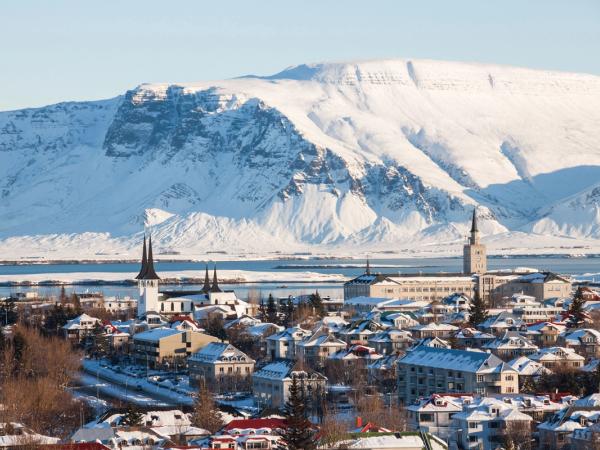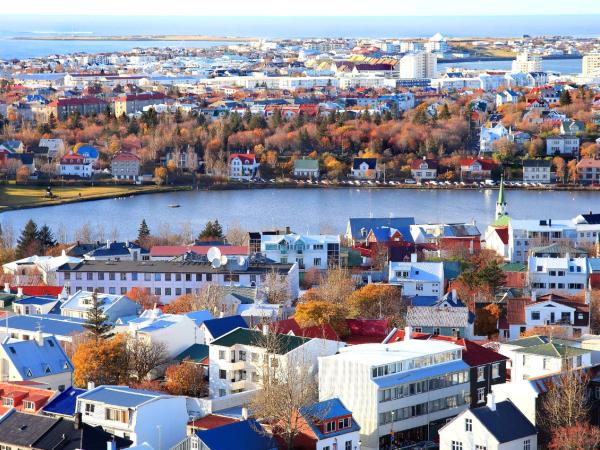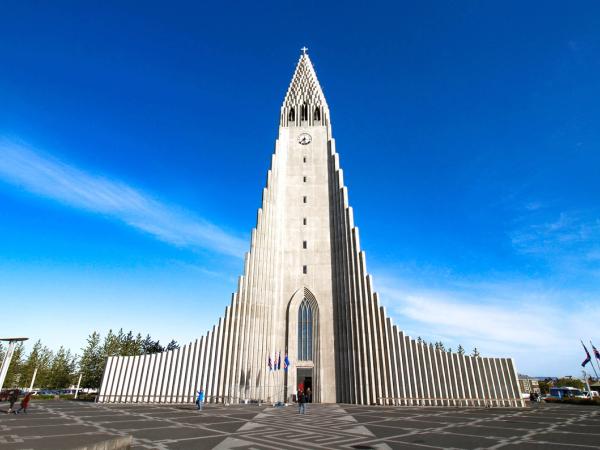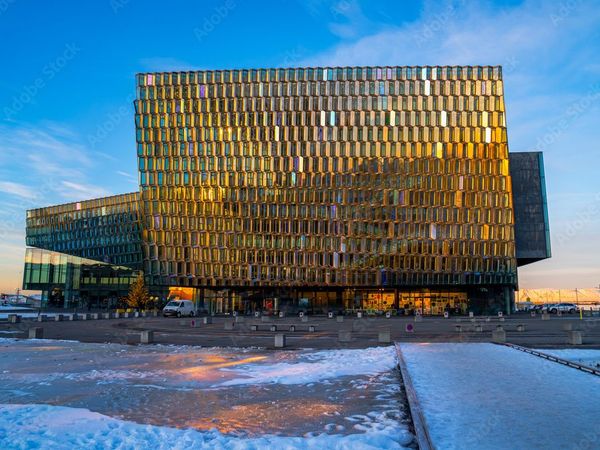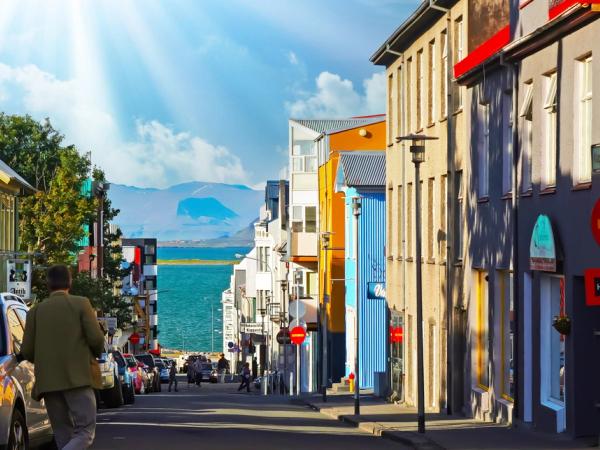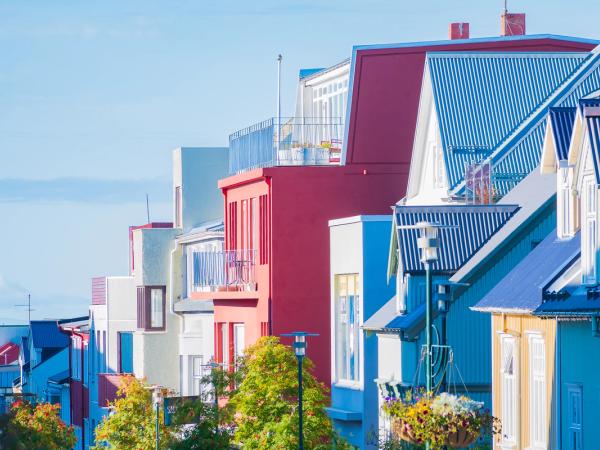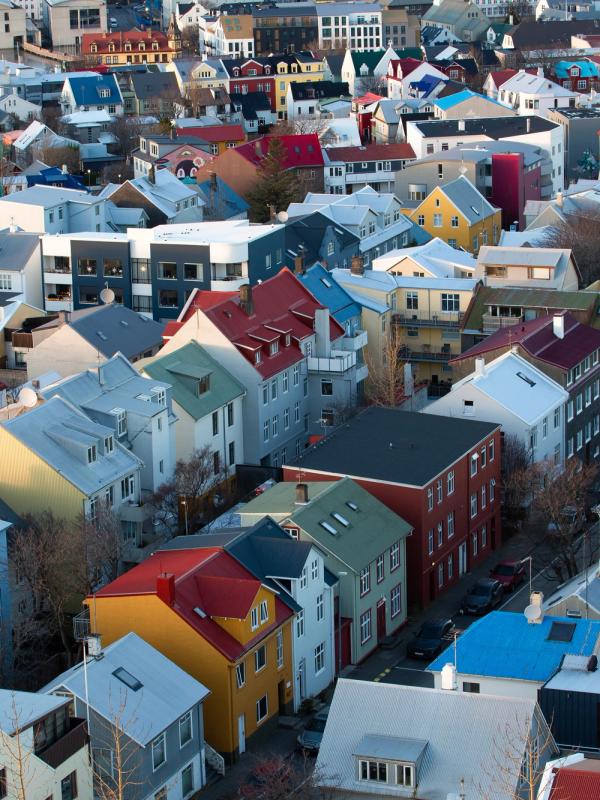
Everything You Need to Know About Reykjavik, Iceland’s Capital
Have you already booked your campervan for your Icelandic adventure? Most travelers will leave at least a day or two before or after their trip to explore Reykjavik, the capital city of the country.
With a small population, you might think that there’s not a lot to see or do in this city. But despite its size, Reykjavik is a buzzing little city filled with interesting sights, architecture, experiences, and great food. Whether you're exploring the city's rich history and culture, trying some Icelandic cuisine for the first time, or simply seeing where the city takes you, Reykjavik has a way of winning people over pretty easily.
In this article, we'll take a closer look at some of the best things to see and do in Reykjavik, including exploring the city, trying local food and drink, and experiencing the best of the city's culture and nightlife. Let’s dive in!
Reykjavik: The Nuts and Bolts of Iceland’s Capital
- Population: ~138,000
- Capital Region population: ~249,054, covering Reykjavik and six surrounding municipalities.
- Location in Iceland: Reykjavik is in the southwest of Iceland, on the southern shore of Faxaflói Bay.
- International Airport: Keflavik International Airport (KEF), located on the Reykjanes Peninsula about 50 km (roughly 45 minutes by road) southwest of the city.
- Domestic Airport: Reykjavik Airport (RKV), within the city, mainly handles internal flights and limited regional flights (previously to Greenland/Faroe Islands).
- Electricity: 230V and 50Hz
- Time Zone: Iceland observes Greenwich Mean Time (GMT/UTC+0) year-round, with no daylight-saving time.
- Currency: Icelandic Krona (ISK).
- Topography: Reykjavik is located on a peninsula surrounded by mountains, with a mix of rocky hills and flat land in the city center.
- International Dialing Code: +354
When is the Best Time to Visit Reykjavik?
Late spring or early autumn is the ideal mix of stable weather and fewer crowds.
These shoulder months give you longer daylight hours than winter, a chance to see the Northern Lights, and less tourist traffic than peak summer.
Summer in Reykjavik: Midnight Sun & Festivals
Summer brings long days, mild weather, and Reykjavik’s biggest festivals.
From June to August, you’ll enjoy near-24-hour daylight, outdoor concerts, and bustling café terraces across the capital. Just keep in mind this is peak tourist season, with higher prices and crowded streets.
Spring and Autumn in Reykjavik: The Shoulder Seasons
If you want to avoid the largest crowds but still have a high chance of some good weather for exploring, then the shoulder season is for you. From April to May and September to October is when you should book your trip. You will also have the opportunity to see the Northern Lights on clear nights.
What is Reykjavik in Winter Like?
If you want to experience the winter wonderland of Iceland, with snow-covered landscapes, skiing, ice caves, and the Aurora Borealis, you can visit Reykjavik from October to April. However, be prepared for cold and wet weather, short days of daylight (only 4 or 5 hours in December), and road closures due to bad conditions. Head on over to our camping in winter section for more info.
What’s the Best Way to Get Around Reykjavik?
Reykjavik is a compact, walkable city best explored on foot.
The downtown area is entirely walkable, making it easy to see all of Reykjavik’s most famous landmarks and attractions. Whether you jump on a walking tour or decide to wander around yourself, you’ll quickly find your bearings in compact Reykjavik.
Reykjavik’s Buses
Strætó, Iceland’s public bus system, is the backbone of local transport. The yellow buses connect all parts of Reykjavik and the broader capital region, and even reach towns across Iceland if you’re venturing further afield. Within the city, buses run regularly from early morning until late at night, though service slows down on Sundays and holidays.
Tickets can be bought in advance through Klapp, with exact cash (drivers don’t give change), or just by using the contactless payment with your bank card on the bus.
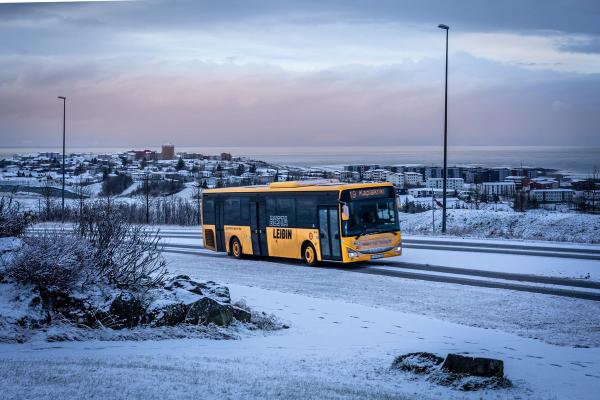
Taxis in Reykjavik
Taxis are reliable, clean, and easily accessible at designated stands throughout the city center, near major hotels, and outside the domestic airport. They don’t usually stop if hailed on the street, so it’s best to call ahead – the main company in the city is Hreyfill. Fares are metered and fairly expensive compared to many other countries, so expect to pay around 2,000–3,000 ISK ($15–22 USD) for a short ride in the city center, and much more for longer trips like Keflavik Airport. Credit cards are widely accepted.
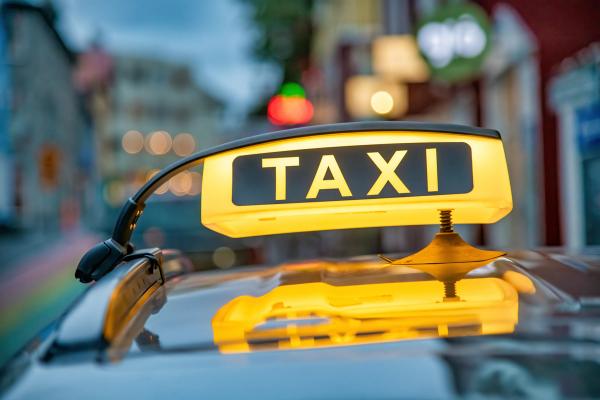
Electric Scooter Rentals in Reykjavik
In summer, Reykjavik’s streets and paths come alive with electric scooters. Companies like Hopp operate app-based rentals, letting you unlock a scooter, zip across town, and drop it at your destination. Scooters are best for short trips across the flat downtown core, where bike lanes and wide sidewalks make them easy to use. They’re not ideal in wet, icy, or windy weather, and services usually pause in mid-winter when conditions aren’t safe. Always ride carefully, stick to bike lanes where possible, and park responsibly to avoid blocking footpaths.

Parking in Reykjavik
Driving in Reykjavik is straightforward, but parking in the city center can be tricky. Street parking is divided into paid zones (P1–P4), with rates highest around Laugavegur and Austurstræti. Payment is by app or at ticket machines, and it’s strictly enforced. Free parking is available further from the core, especially in residential areas and near attractions like Perlan. Many hotels and guesthouses offer limited on-site parking, so it’s worth checking in advance if you’re renting a vehicle.
What to See and Do in Reykjavik
Reykjavik squeezes a lot into a small city: striking landmarks, geothermal pools, galleries, and nature at the edge of town.
Reykjavik’s Landmarks
One of the most iconic landmarks in the city is Hallgrímskirkja, a towering church that dominates the city skyline. It’s one of the central areas of the city, sitting at the top of the interesting street Skólavörðustígur. The architecture was inspired by the basalt columns found around Iceland; we recommend taking the elevator to the top of the tower for great views over the city and the surrounding landscape.
Another must-see attraction in Reykjavik is the Harpa Concert Hall, which is known for its stunning architecture and as a home to classical concerts, theatre, and comedy. Perched on the edge of the water next to the harbor, from here you can enjoy the immensely rewarding views across the bay toward Mt. Esja itself, considered a big part of Reykjavik’s skyline. It’s free to wander around inside the building, but to get a glimpse of the actual concert halls inside, you’ll either need to join a tour or buy a ticket to a show.
For a more relaxed experience, take a stroll around Tjörnin Lake, which is in the heart of the city. This picturesque lake is home to a variety of birds and is surrounded by beautiful parks and gardens.
As you explore Reykjavik, be sure to keep an eye out for the city's many street art and murals. These colorful works of art can be found throughout the city, adding a bit of an alternative edge.
Reykjavik’s Hot Springs and Swimming Pools
Hot pools are at the heart of everyday life in Reykjavik.
Locals soak year-round in geothermally heated baths, whether it’s the art deco Sundhöllin downtown, family-friendly Laugardalslaug, or the seaside hot tubs at Nauthólsvík. These pools are social hubs as much as swimming spots, and there’s no better way to experience Icelandic culture than slipping into the warm water on a cold day. Then, there are the luxurious hot springs in and around the capital for a more decadent soak.
We’ve rounded up all the best places to enjoy Reykjavik’s geothermal hot water in a dedicated guide.

Reykjavik’s Museums
Reykjavik’s museums showcase everything from Viking history to cutting-edge art.
The National Museum traces Iceland’s story from settlement to independence, while the Reykjavik Art Museum showcases modern works across three venues. On the quirkier side, you’ll find the Icelandic Punk Museum and even a collection dedicated to whales. Whether you’re after culture, history, or something unexpected, the capital’s museums have you covered – and we’ve rounded up the best ones in a full article, as there are many more worth visiting, such as Perlan or the Phallological Museum.

The Best Areas to Stay in Reykjavik
Reykjavik is small enough that you can reach most sights on foot or with a short bus ride, but each neighborhood has its own atmosphere. Whether you want nightlife, peace and quiet, or a local feel, here are the best areas to base yourself in Iceland’s capital.
Downtown (Miðborg)
Best for first-time visitors and anyone who wants to be close to the action.
The heart of the city, packed with cafés, bars, shops, and many of Reykjavik’s most famous landmarks, including Harpa Concert Hall and Hallgrímskirkja. Hotels here range from boutique stays to budget hostels. Staying downtown means you can walk everywhere, but it’s also the busiest and noisiest area.
Laugardalur
Best for families, budget travelers, and those who like green spaces.
A leafy, residential district east of downtown, Laugardalur is home to the city’s largest swimming pool, a botanic garden, and family-friendly parks. It’s quieter than the center but well connected by bus, and you’ll find Reykjavik’s main campsite here too.
Vesturbær
Best for travelers who want a neighborhood feel within walking distance of downtown.
Just west of downtown, Vesturbær has a more relaxed, local vibe. The neighborhood is known for Vesturbæjarlaug swimming pool, cozy cafés, and easy access to the coastal path that loops around the city. Accommodation options include small guesthouses and stylish apartments.
Hlíðar & Hlemmur Area
Best for value stays and easy access to buses for day trips.
Close to the main Hlemmur bus station, this area mixes modern hotels with affordable guesthouses. It’s not as charming as downtown, but it’s practical, with excellent transport links and Reykjavik’s best food hall, Hlemmur Mathöll.
Grandi & Old Harbor
Best for foodies, culture seekers, and travelers planning boat trips.
North of downtown, Grandi has transformed from an industrial dockland into a trendy area full of food halls, craft breweries, museums, and galleries. The Old Harbor is also the departure point for whale-watching tours.
Hafnarfjörður
Best for road-trippers, families, and those who want a quieter base with easy access to Reykjavik.
About 20 minutes south of Reykjavik, Hafnarfjörður is a port town built on lava fields, famous for its Viking festival and strong connection to folklore. It has a cozy small-town feel, with its own swimming pool, harbor cafés, and access to coastal walks. Hotels and guesthouses here tend to be more affordable than in the city center.
Mosfellsbær
Best for active travelers, nature lovers, and anyone seeking a local experience close to the capital.
North of Reykjavik, Mosfellsbær is a suburban town surrounded by hills and valleys, often called “the green town.” It’s a great spot for hiking and outdoor activities, with trails leading into the mountains. You’ll also find bakeries, hot springs, and a handful of local accommodations. The drive into central Reykjavik takes about 15 minutes.
Eating and Drinking in Reykjavik
No trip to Reykjavik is complete without trying some of the local cuisine. Iceland has a unique culinary tradition, and the capital city is home to a variety of restaurants and cafes where you can sample some of the country's most famous dishes.
Traditional Icelandic food is strange – most of it was fermented, pickled, or dried in order to conserve it over the long winters. It’s not so popular with Icelanders today, but you can still try a lot of it. Many travelers will be tempted to sample hákarl, or fermented shark meat. While it may not be to everyone's taste, hákarl is an experience you probably won’t forget – for better or worse. You can sample some at Íslenski Barinn in downtown Reykjavik.
Modern-day Icelandic foods are much more palatable; we recommend trying Skyr, a type of yoghurt that’s high in protein and low in fat. It also makes for a perfect snack on your Iceland campervan road trip. Then there’s the delicious lamb, which might sometimes be smoked, and of course, plenty of fresh seafood as well. A big part of modern-day Icelandic cuisine are the country’s soups (langoustine, fish, or meat) perfect for those blustery Icelandic days.
Coffee is central to Icelandic daily life. Reykjavik’s cafés and bakeries are great places to pause over a strong cup and a pastry. Try visiting the famous Mokka-Kaffi, a coffee house that has been a Reykjavik institution since 1958, or head to Brauð & Co, a popular bakery that serves fresh bread and pastries (the cinnamon scrolls here are second-to-none!).
Finally, Reykjavik is catching up fast to the rest of the world when it comes to craft beer. Made using the local ingredients on offer, such as birch or arctic thyme, many bars and restaurants across the capital will have a great selection of local beers. For the best, though, head to Micro Bar or Skúli Craft Bar, both craft beer specialists.
Nightlife & Live Music in Reykjavik
Reykjavik’s nights start slow and run late. On Fridays and Saturdays, bars don’t really fill until after 11:00 pm, with dance floors busy past 2:00 am. Weeknights are quieter, but there’s usually a gig or DJ set somewhere in the center.
Live music: Harpa hosts orchestral and touring shows year-round, while smaller bars and venues in the downtown grid book indie, jazz, and electronic nights. Check listings at your hotel or pop into bars along or just off Laugavegur and you’ll often catch a set without planning.
What it costs: Drinks aren’t cheap. A pint of draft beer typically runs 1,200–1,600 ISK ($9–12 USD), cocktails higher. Time your evening around happy hours (late afternoon to early evening) for 2-for-1 or discounted pours.
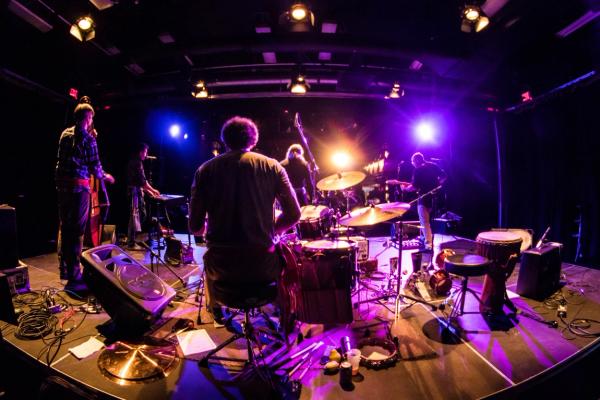
A Short History of Reykjavik
Reykjavik began as a Viking settlement in 874 AD and grew into the world’s northernmost capital.
Ingólfur Arnarson, a Norwegian chieftain, chose the site after spotting steam rising from the hot springs – giving the city its name, “Smoky Bay.”
From these early turf houses, Reykjavik slowly developed as a fishing and trading post, shaped by Iceland’s isolation and harsh environment. The city remained small and rural until the 18th century, when it became the center of Icelandic independence movements and, later, the capital of a sovereign nation in 1944.

Exploring Reykjavik
Reykjavik might be small, but it never feels limited. Between the hot pools, harbor walks, late-night music, and endless coffee breaks, the city is able to give you a solid glimpse of Icelandic life in a very short amount of time.

